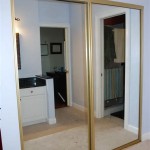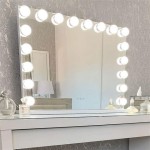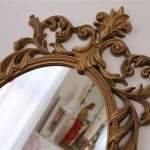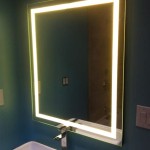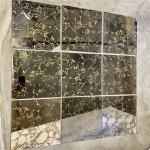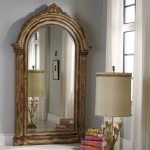Antique Long Mirrors: A Reflection of History and Style
Antique long mirrors offer a captivating glimpse into the past, showcasing the artistry and craftsmanship of bygone eras. More than mere reflective surfaces, these pieces serve as functional art, adding character and a touch of history to any space. From the elaborate gilded frames of the Victorian period to the simpler, more streamlined designs of the Art Deco movement, antique long mirrors reflect the evolving aesthetics of their respective times.
The earliest long mirrors, dating back to the 17th century, were often made using mercury-backed glass. This process involved applying a thin layer of mercury to the back of a glass sheet, creating a reflective surface. However, the toxicity of mercury led to the development of silvered glass in the 19th century, a safer and more efficient process that remains the standard today. Understanding the production methods helps collectors identify and appreciate the age and authenticity of an antique mirror.
The frames of antique long mirrors are often as significant as the mirrors themselves. Craftsmen employed various materials, including wood, gesso, metal, and tortoiseshell, to create ornate and visually striking frames. Carved wood frames, often gilded or painted, were popular during the Baroque and Rococo periods. The Victorian era saw the rise of elaborate frames featuring intricate carvings, floral motifs, and decorative elements like cherubs and scrolls. The 20th century brought about simpler, more geometric frames, reflecting the Art Deco and Modernist aesthetics.
Several factors contribute to the value of an antique long mirror. Age is a primary consideration, with older mirrors generally commanding higher prices. The condition of the mirror is also crucial. While some signs of age, such as minor foxing or patina, can be acceptable and even desirable, significant damage or restoration can detract from the value. The rarity of a particular design or the use of unusual materials can also increase its worth.
Provenance, or the documented history of ownership, can significantly impact an antique mirror's value. A mirror with a known history, particularly if it was owned by a prominent figure or displayed in a significant location, can be highly sought after by collectors. Detailed records of ownership can add a layer of authenticity and historical significance to the piece.
Different styles of antique long mirrors reflect the design trends of their respective periods. For example, Cheval mirrors, full-length mirrors mounted on pivoting frames, were popular in the 18th and 19th centuries. These freestanding mirrors were practical and stylish additions to bedrooms and dressing rooms. Psyche mirrors, characterized by adjustable tilting mirrors mounted on frames, also gained popularity during the Victorian era. These mirrors offered a convenient way to view oneself from different angles.
When incorporating an antique long mirror into a modern interior, careful consideration of scale and placement is essential. A large, ornate mirror can serve as a focal point in a room, while a smaller, simpler mirror can be used to enhance the existing décor. Placing a mirror opposite a window can help maximize natural light and create a sense of spaciousness. Alternatively, a mirror can be positioned to reflect a piece of artwork or a decorative element, adding depth and visual interest to the room.
Caring for antique long mirrors requires gentle handling and appropriate cleaning methods. Dusting the frame regularly with a soft cloth can help prevent the buildup of dirt and grime. Cleaning the mirror surface should be done with caution. Avoid using harsh chemicals or abrasive cleaners, which can damage the delicate silvering. A damp cloth with a mild detergent solution is usually sufficient for cleaning the mirror. For stubborn stains or heavy grime, consulting a professional conservator is recommended.
The market for antique long mirrors offers a diverse range of styles, periods, and price points. Antique shops, auctions, and online marketplaces are all viable sources for finding these unique pieces. When purchasing an antique mirror, it is important to thoroughly inspect the item for any damage or repairs. Asking questions about the mirror's history and provenance can help ensure authenticity and inform your decision. A well-chosen antique long mirror can be a beautiful and valuable addition to any home, reflecting both history and personal style.
The enduring appeal of antique long mirrors lies in their ability to combine functionality with artistry. These pieces serve not only as practical objects for reflecting one's image but also as decorative elements that enhance the aesthetic of a space. Their historical significance, unique craftsmanship, and reflective qualities make them timeless additions to any interior.

Buy Oversized Full Length Mirror Antique Gold Handmade French Era Inspired 19th Century Design Stand Alone Show Stopper In

Gilt Full Length Mirror Dressing Antique Long Tall Portrait Overmantel Overmantle Pier Wall Convex

Antique Long French Mirror Centuria

Long Classic Baroque Wall Mirror Antique Silver Gold Victorian Golden Italian Style Leaner Made In Italy Item 5028

Extra Large Gold Antique Mirror Full Length Long Wall Leaner Wooden 173cm 185cm

Polished Glass Salon Mirror Vintage For Professional At Rs 35000 Piece In New Delhi

Classic Long Mirror Antique Silver And Gold Leaf Made In Italy Wall Full Length Entryway Dressing Item 7003

Our Favourite Large Mirrors Vintage Mirror Interior Design Decor

Extralarge Mirror Full Length Gold Antique Dressing Wall Long 180cm 120cm

William Iv Antique Full Length Cheval Mirror 64822 Ingantiques Co

